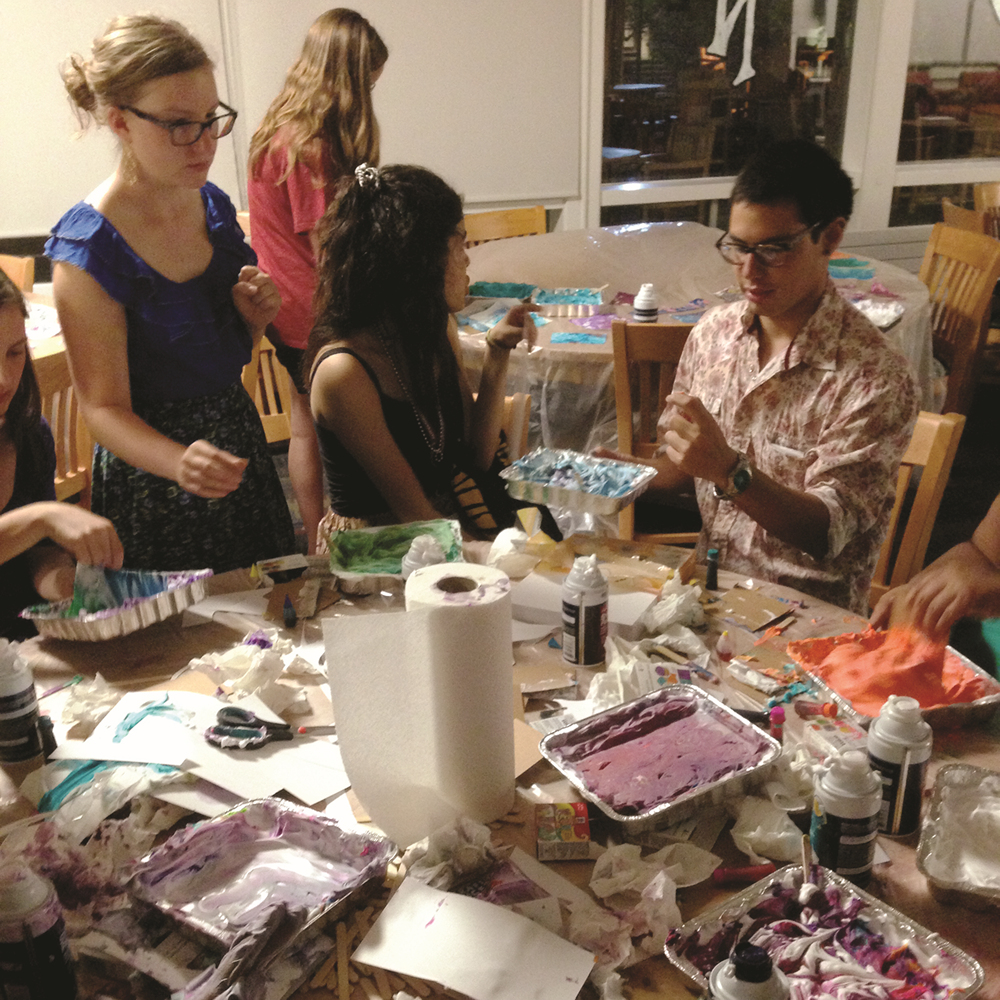The Stanford Arts Institute will host an Art In Your Dorm program for the entire campus in March 2014, allowing students to showcase their artwork and participate in workshops as part of the University’s growing efforts to support the arts.
The Art in Your Dorm initiative, which piloted successfully during New Student Orientation, was inspired by FloMoMa, a Florence Moore Hall (FloMo)-based arts appreciation event that occurs at the end of winter quarter. Paula Salazar ’13, a former Cardenal resident assistant and a current Arts in Student Life coordinator for the Stanford Arts Institute, had expanded the annual FloMoMa from a weekend-long gallery exposition of residential artwork to a weeklong program celebrating the arts, a model that the pilot followed.
Salazar attributed the pilot’s success to how accessible programming was for students.
“It was extremely localized and casual,” Salazar said. “There are always people who wouldn’t normally self-elect into art events, but if it is local, they’re more likely to drop by and participate.”
During NSO, 13 houses in seven residence halls participated in the event. An estimated total of 450 students were involved in the event, according to Salazar. The Arts Institute is still contacting dorms and residential fellows to finalize locations for Art In Your Dorm for the future.
Other initiatives
The Art in Your Dorm initiative is only one of several programs recently introduced by the University in an effort to increase participation in and awareness of the arts. Other projects include the residential Immersion in the Arts: Living in Culture (ITALIC) program and Stanford’s Summer Internships Program in Arts Administration, which was created in 2009 and which has since grown to feature 15 different internships.
Alex Fialho ’11, who landed his first job in New York City through the Summer Internships Program in Arts Administration at Gagosian Gallery, said the program was a “good entry point” into the art world.
Although Fialho described the University as very supportive while he was at Stanford, he furthered his career in the arts principally by working outside of school, including interning at the San Francisco Museum of Modern Art during his junior year.
Salazar framed Fialho’s experience as “phase one” of Stanford’s efforts to promote the arts on campus, in which the University provides funding for students and shows a commitment to the arts.
Salazar said that she is currently implementing “phase two,” which she described as the University proactively encouraging students to become more involved in the arts.
“We’ve built programs now, and we can make them stronger by reaching out to students more,” Salazar said.
Salazar acknowledged that students may be hesitant about seeking opportunities in the arts because they feel they are too inexperienced, a concern she has observed through speaking with students.
“It seems an all-or-nothing mentality with students here, and it’s just not true,” Salazar said. “The Arts Institute hosts programs like Art In Your Dorm to show students that art can be as big or as little of a part in their lives, but can still add meaning to their experiences as Stanford students.”
Other programs that Salazar has initiated this year to promote this idea include Your Art Here, which showcases student art around campus and hosts workshops for the student cohorts. She has also worked on marketing for the Art Institute and with other art organizations on campus to promote awareness about the arts.
“You don’t need to be an expert to be involved in the arts,” Salazar said. “Creative expression can be a great release, and it’s fine if that’s all art is to you.”
Contact Irene Hsu at ihsu5595 ‘at’ stanford ‘dot’ edu.
